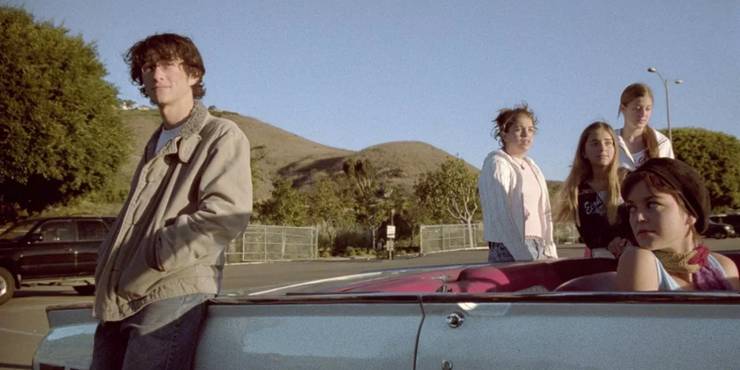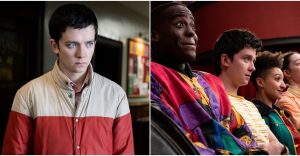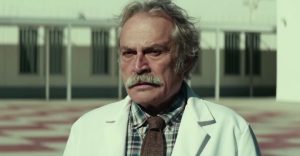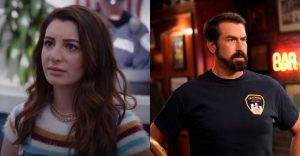Knives Out: Every Easter Egg In The Murder Mystery

Rian Johnson’s murder mystery Knives Out is filled with Easter eggs and references that not only dares the viewer to test their literary prowess and knowledge of the genre, but uses that knowledge against them. Knives Out follows Detective Benoit Blanc, portrayed by Daniel Craig, as he investigates the murder of the popular mystery novelist Harlan Thrombey (Christopher Plummer) on the night of his 85th birthday party. Following Agatha Christie’s classic story structure, anyone who was present at Harlan’s party could be a suspect.
One of the most compelling aspects of Knives Out is its apparent awareness of common murder mystery tropes and how it uses that knowledge to intentionally mislead the audience. Because he fought with Harlan on the night of his murder and was at risk of loosing his inheritance, Ransom is presented as the most likely person to have killed Harlan, which causes the audience to automatically dismiss him as the killer since it’s very rare that a murder mystery paints the most obvious candidate as the murderer.
Instead of copying tradition, Knives Out cleverly acknowledges it through the use of Easter eggs and references to other detective stories and films that are woven throughout the background, constantly reminding the audience that this story is a murder mystery and, therefore, will function in the same way as its predecessors. That elevated awareness not only intelligently pokes fun at the mystery tropes that have become cliches, but also redirects the viewer’s attention so that they don’t see Knives Out‘s twist ending coming.
Benoit Blanc’s Mississippi Drawl

The influence of Agatha Christie is evident within every scene in Knives Out, from the gothic architecture to her basic formula, following a group of characters who coincidentally find themselves caught up in a murder mystery. Out of all of the references to Christie’s mystery novels, the most dynamic influence can be found in Detective Benoit Blanc himself, who appears to be a parody of the famous Belgian detective Hercule Poirot, from his name to his deep Southern accent.
In an interview with ScreenCrush, Johnson explains how Blanc’s deep Southern accent was a detail he decided to include in the script. “I figured that because he was going to be in New England, to make him a fish out of water and maybe make the suspects in the case not take him quite seriously, I would give him this deep Southern lilt,” said Johnson. “Then I worked with Daniel during pre-production to kind of figure out what that meant.”
The Southern accent, which Craig modeled after the Mississippi drawl of the historian Shelby Foote, could be interpreted as a reference to Poirot, who is consistently referred to as a “foreigner” in Christie’s novels. As a renowned detective in 20th century England, Poirot maintains that same fish-out-of-water semblance, with his Belgian accent and his asides in his native French language. Not only is Blanc’s background similar to Poirot’s, but his name intentionally has a similar cadence. In the same interview, Johnson stated that Benoit Blanc’s name was lifted from a French tutor he once had, and that he “thought it’d be fun to give a last name Americans would struggle with, a bit like Poirot.”
Tribute to Sleuth

Knives Out not only references classic mystery literature, but also pays tribute to Joseph L. Mankiewicz’s mystery film Sleuth. During an episode of EW’s Around the Table, Daniel Craig explains that Blanc first enters the story fresh from solving another case, one which was centered around a tennis player. Johnson shares that this detail about Blanc’s former case is actually a reference to Mankiewicz’s 1972 mystery thriller.
“At the beginning of Sleuth, the novel that he’s dictating is Death by Double Faults, and he’s describing how the killer paced along the lines of the tennis court and threw the body into the clay,” said Johnson. Similar to Sleuth’sopening, Knives Out first introduces Benoit Blanc by alluding to a fictitious detective story, the mystery film Sleuth, which not only perpetuates the archetypes of the mystery genre, but helps break down the boundaries between fiction and reality in the mind of the viewer.
Joseph Gordon-Levitt’s Surprise Cameo

From neo-noirs to blockbusters, Rian Johnson has directed films across many genres and the one consistency among them is his continued partnership with actor and director, Joseph Gordon-Levitt. Gordon-Levitt, who has starred in films such as The Dark Knight Rises and Inception, has been featured, whether it be in a leading role or a short cameo, in every single movie Johnson has directed, including his original mystery Knives Out.
The collaboration between the two dates as far back as Johnson’s first film, Brick (2005), in which Gordon-Levitt portrayed the main protagonist Brendan Frye. Since this first project, Gordon-Levitt has been featured in small roles in Johnson’s later films, including a recent cameo in Star Wars: The Last Jedi as the voice of Slowen-Lo, a resident of Canto Bight that reports the ship Rose and Finn ditch on the beach to the authorities.
In Knives Out, Gordon-Levitt’s cameo occurs during one of the few glimpses into Marta Cabrera’s (Ana de Armas) personal life outside of the Thrombey estate. Unlike some of his previous cameos, Gordon-Levitt doesn’t make an onscreen appearance in Knives Out, but rather his voice can be heard on a television program that’s playing in the background of Marta’s apartment. Gordon-Levitt voices Detective Hardrock, a simple yet compelling bad-cop role that subtly juxtaposes the farcical detective archetypes present within Knives Out from Benoit Blanc’s genius to Lieutenant Elliot’s (Lakeith Stanfield) calm and collected persona.
The Mysterious Symbol From Brick

Since Knives Out marks Johnson’s return to the mystery genre, it seems only fitting that he would top off his latest mystery film with a callback to his first. Brick features a prominent symbol that was integral to the plot, and that helped lead the main character Brendan Frye to the site of his ex-girlfriend’s murder, essentially kick-starting the plot of the film. While the Easter egg is a subtle one, that same symbol briefly appears in Knives Out during the car chase scene between Marta Cabrera and Benoit Blanc.
–
In one last twist of the knife, Knives Out continues to comment on the audiences’ prior set of knowledge by making one other reference to a novel. In Knives Out, Thomas Pynchon’s satirical novel Gravity’s Rainbow becomes a topic of discussion, to which one character admits never having read the book. When Blanc says, “No one has,” it further perpetuates the irony that exists at the core of Knives Out, that the mystery film is based off of concepts and themes from literature that the majority of people in modern times have never read, but are still known today because of their presence in knockoffs and riffs of the original detective stories. In a film about a mystery writer’s legacy, none of the character’s themselves seem to have an interest in the written word. Harlan’s portrait, smiling and watching the events of Knives Out unfold from its central location on the wall, almost appears like one final jest at the viewer’s expense that we don’t know as much as we think we do.
















